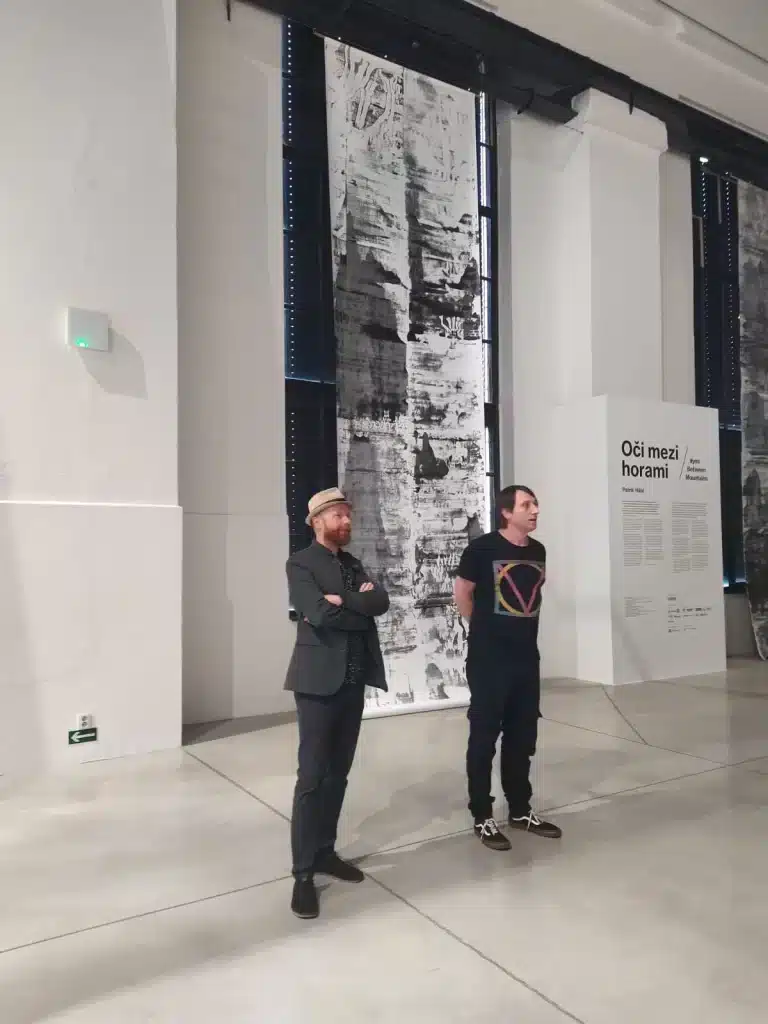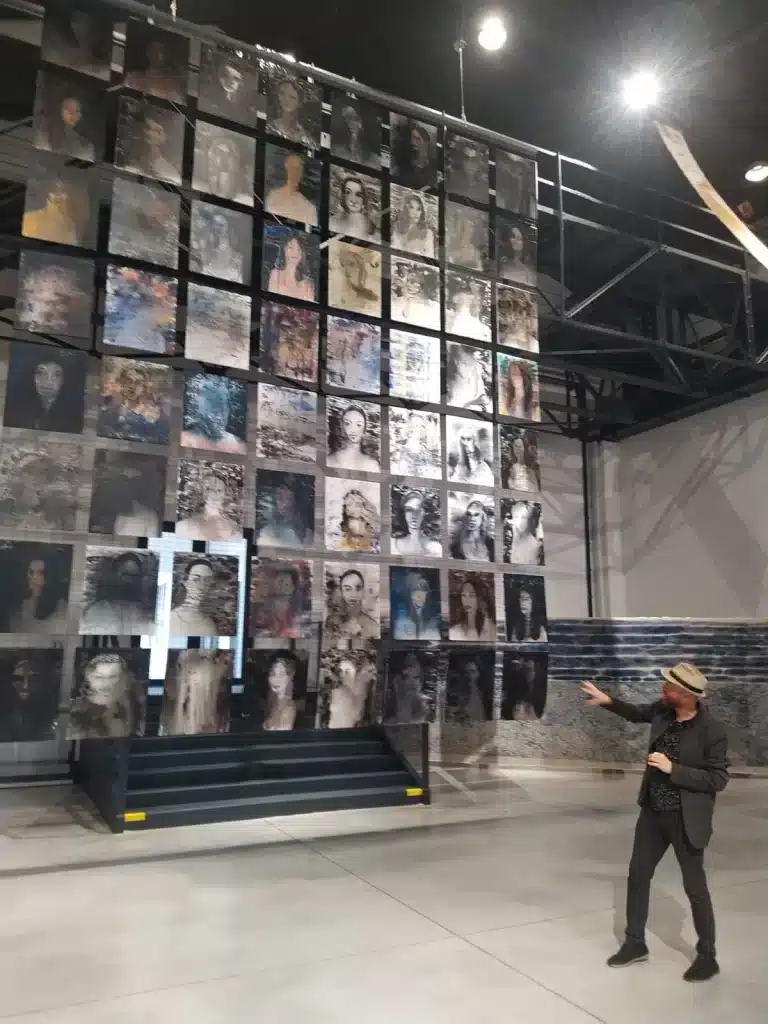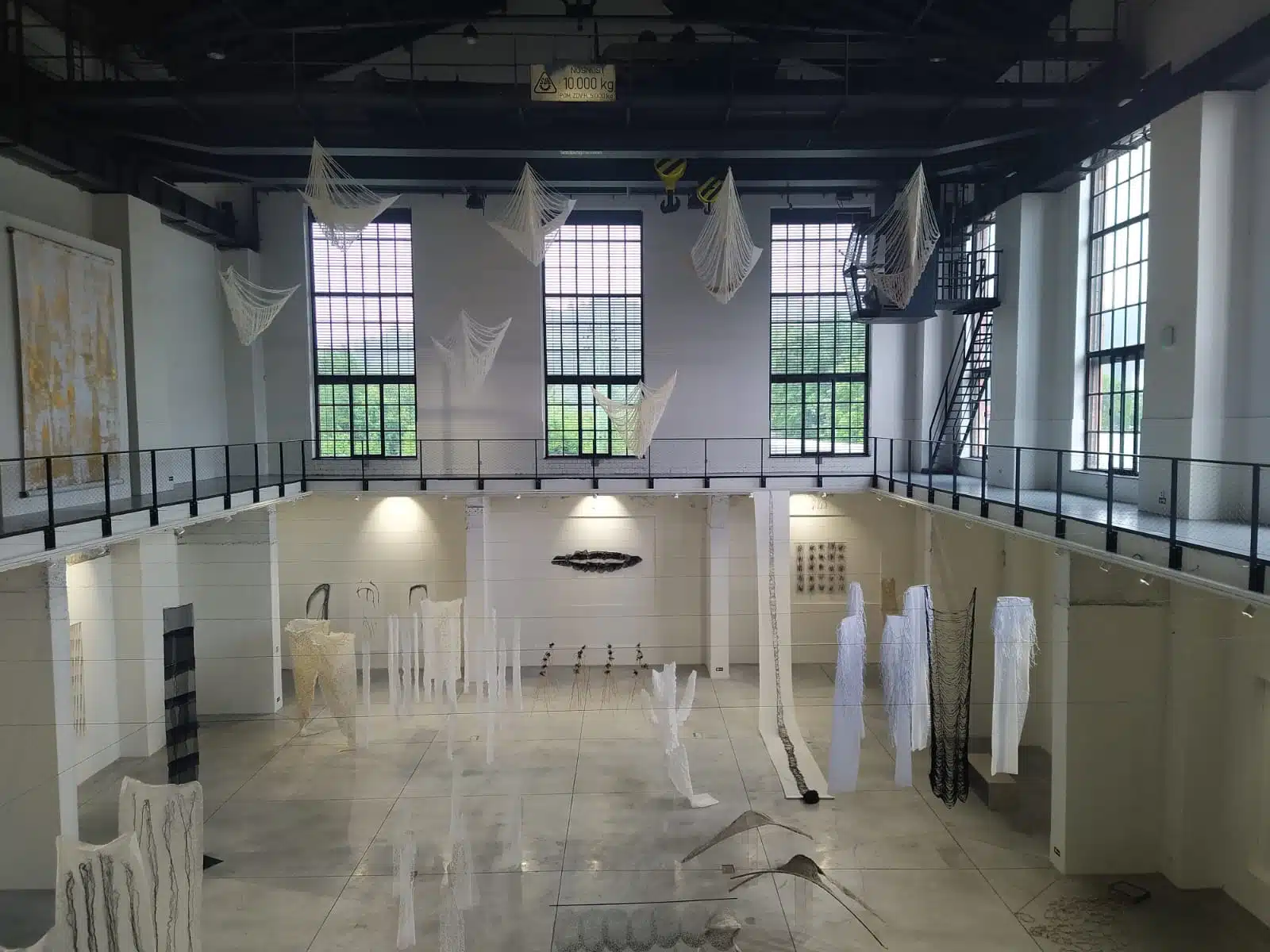Today, I’d love to share an experience with you—one that absolutely thrilled me. I visited EPO1 Gallery in Trutnov, Eastern Bohemia, a place I had been hearing glowing reviews about for quite some time. If you are learning Czech, this is a perfect trip to combine language learning with culture.
Trutnov is a charming town nestled at the foothills of the Krkonoše Mountains, home to the Czech Republic’s oldest and most visited national park. So chances are you’ll find yourself heading there at some point for summer hiking or winter sports. For students learning Czech in the Czech Republic, this area offers a great opportunity to discover Czech culture while exploring nature. If that’s the case, I wholeheartedly recommend making a stop—or better yet, carving out time—for a visit to this gallery.
The gallery is located in a former power plant that had been left to decay for many years—like many industrial buildings in our region. In 2018, the Kasper family purchased the building, and after four years of careful and respectful renovation, they opened what is now the largest contemporary art gallery in the Czech Republic. Their efforts earned them several architectural awards.
From the beginning, they’ve worked closely with curator Jan Kunze, who gave the gallery a clear artistic vision and continues to serve as its director. Today, EPO1 offers over 3,400 square meters of exhibition space, showcasing both solo exhibitions by Czech artists and thematic group shows, often featuring artists from across Central Europe.

This year’s summer exhibition block opened on May 11 and runs until October 6, 2025. Let me take you on a little imaginary tour of what you can experience there.
In the vast turbine hall, the first exhibition you’ll encounter is called “The Fragility and Strength of Fibre,” a retrospective of the lifelong work of Eva Damborská, an elder-generation artist known for her sculptures made of textiles, threads, paper, and fine wire. The ethereal installation gives her work a dreamlike, almost otherworldly quality. “Her work carries traces of contemplation, care, and meditative repetition, in which a quiet strength is hidden.”
In the second part of the turbine hall, you’ll find the exhibition “Eyes Between Mountains” by mid-career artist Patrik Hábl, who regularly exhibits internationally. His painting is deeply influenced by Asian aesthetics, and he uses techniques like dripping and pouring paint to create large-scale works. In this space, his massive 25-meter scrolls hang from the ceiling, creating a sense of immersion. A new element in his work is also on display here: 64 portraits of women arranged in the center of the hall, reminiscent of a Gothic altarpiece or a cathedral of art.
“The space stops being merely a gallery hall—it becomes a painting we step into.”

For anyone studying Czech, exhibitions like this can also be a unique way to learn new Czech words related to art and culture —something we often practice in our Czech courses.
And that’s only the beginning! In the next part, we’ll step beyond the turbine hall to discover three more fascinating exhibitions that will take us from the shadows of the underworld to the playful dialogue between industrial heritage and contemporary art.


